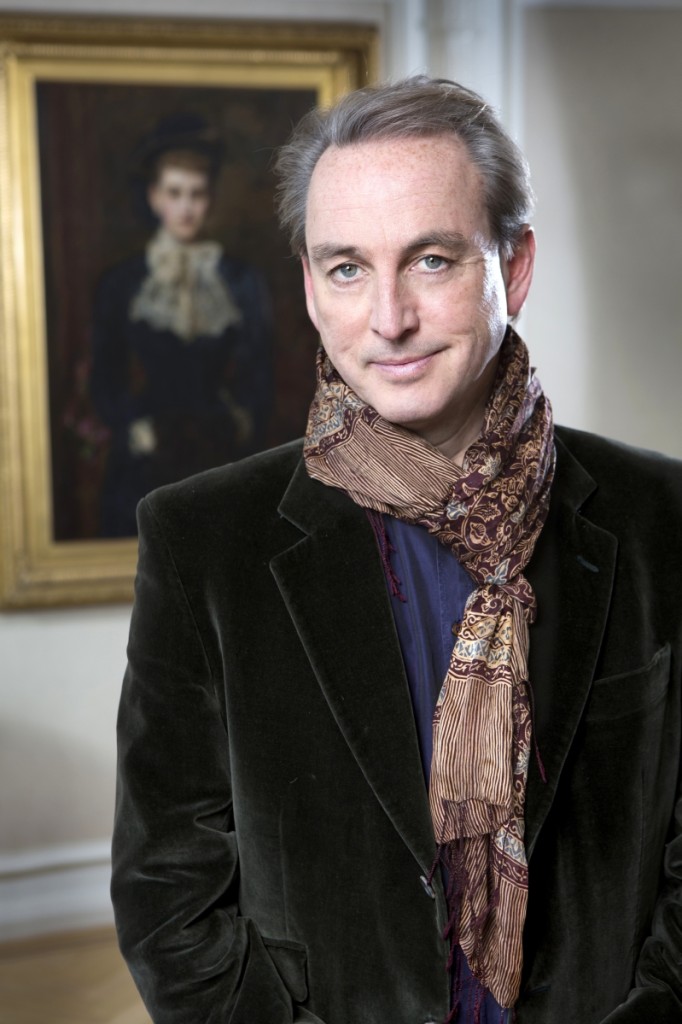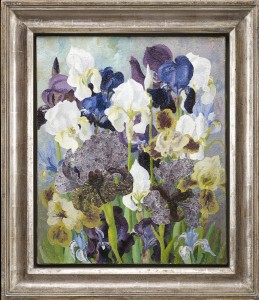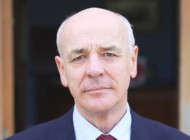
Art dealer Philip Mould began trading in art in his early teens and has built an international business specializing in early British art and portraiture. He recently celebrated his 30th anniversary in the art business. Known as the “Art Sleuth” for making a string of notable art discoveries, Mould’s finds include the lost half of Gainsborough’s earliest known work, the only portrait of Prince Arthur Tudor and five lost works by Van Dyck. He served for two decades as art adviser to the Palace of Westminster, finding about 200 historical and political works all over the world. He wrote two books on art discovery: Sleepers: In Search Of Lost Old Masters (Fourth Estate, 1995) and Sleuth: The Amazing Quest for Lost Art Treasures (Harper Collins, 2011). Sleuth gave rise to his hit BBC1 show Fake or Fortune? in 2011, a program now in its sixth series co-presented with Fiona Bruce that seeks to solve art mysteries. It is shown in more than 50 countries across the world.
You broke into the art world with your first purchase of “an unappealing portrait of a monk,” which you identified as a lost portrait of a Seventeenth Century poet. Can your share that story with us?
Thirty years ago, I bought it for £180 in a minor auction house and established that it was a lost painting by Godfrey Kneller, circa 1685. It was missed because he was bald. Hair is often an unequivocal indicator of date in portraiture and they had it down as an unattributed work done 200 years later. I sold it for £20,000 and it gave me a fascination with the potential to discover lost faces. Despite lots of mistakes, I began to get my eye in with main portraitists in British art over 400 years and a business was born. I called it Historical Portraits Ltd – I now trade under my own name.
How did that experience set the course for you careerwise, and how did Fake or Fortune? come about?
ForF came about after my last book I wrote eight years ago (titled The Art Detective in the United States). This was my second on the subject of art discoveries made by me and others. Working with the producer of the Antiques Roadshow, Simon Shaw, we generated a new idea that allows the viewer to follow the destiny of one picture along the lines of a “whodunnit.” We were quite unprepared for the success: it seems that the most arcane art history can attract a very broad popular audience provided it is seen through the prism of an owner to whom you can relate, and who has much to either gain or lose. The show last Sunday peaked at 5.2 million viewers – and that’s before catch-up, which is frankly how I watch TV these days, so mercifully we are doing something right.

“May Flowering Irises No. 2” by Sir Cedric Morris (1889–1982), 1935. Image courtesy Philip Mould & Co.
Your specialty as an art dealer is British portraiture. What’s the most interesting thing that’s passed through your hands?
The lost and only contemporary portrait of Prince Arthur, Henry VIII’s elder brother who died aged 15. It was a discovery that came about with research – I had an excellent researcher, Piers Davies, who helped clinch the provenance from royal archival documents. I have had three research assistants since, all of whom I have collaborated in making the business happen. Team work is essential – as it is with my TV progs.
How does science figure into your detective work?
It has grown in importance significantly in the last 20 years for three reasons: old-fashioned connoisseurship is on the wane; data and techniques of analysis have become more sophisticated and precise; fakery is now much more sophisticated. To indirectly quote Colette Loll of Washington, DC-based Art Fraud Insights LLC, art authentication has become an arms race with the faker.
Of all the British painters, what is it about Hans Holbein’s work that you admire? Clarity, virtuosity and timeless humanity.
The show is now in its sixth season and has a loyal following. Is it getting harder or easier now to find good stories to tell?
Easier. We get well over a thousand proposals after each series and not just from the UK, but the 40 or so countries which show the program. We did our first one based in Australia on the 2nd of September.
What do you personally collect?
Modern British. I have a soft spot for Sir Cedric Morris [1889-1982] – who taught Lucian Freud – and was as great a horticulturist as he was a painter.
If you could go on a shopping spree at any museum in the world and take home one item, where would you go and what would you choose?
I would pillage the Frick with the frenzy of a fox in a chicken coop. I just love the place, and if pushed for just one, I might carry home the portrait of Emma Hamilton holding a spaniel by George Romney. I have just the place for it. There are greater works of art there, but it presses the majority of my buttons.
-Andrea Valluzzo




